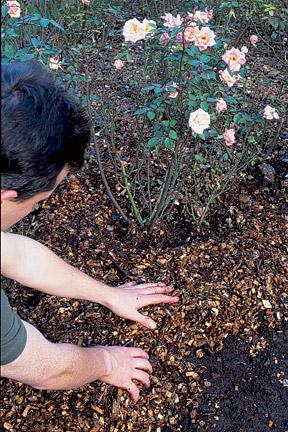An American US-Based Seed Company
| Strain Reviews | Buy Seeds | View Strains |
Mulches and mulching for Cannabis |
||
Mulching is generally used to improve the soil around plants, but it also gives your garden a neat, tidy appearance and can reduce the amount of time spent on tasks such as watering and weeding. Mulches help soil retain moisture in summer, prevent weeds from growing and protect the roots of plants in winter.
Quick facts Depending on the type of mulch used, there are many benefits of mulching including: Help soils retain moisture in summer Biodegradable mulches Non-biodegradable Sheet mulches or woven landscape fabric are ideal for new beds or borders. After laying, slits can be made in the fabric, allowing direct planting through it. The downside is these mulches do not look very attractive, but they can be camouflaged with gravel, bark or others materials. To allow rain and irrigation water to reach the roots it’s best to choose a permeable sheet. When to apply mulch How to apply mulch To be effective, biodegradable mulches need to be between at least 5cm (2in) and ideally 7.5cm (3in) thick Depending on the quality of the material there is a possibility of introducing weeds, pests and diseases to the garden and, with woodchips there is a slight risk of introducing honey fungus. Bear in mind that once you have added a mulch to the soil you will need to apply extra water to reach the roots of the plants beneath. There is no need to remove mulches to apply fertilisers. Fertilizers are spread over mulches in late winter and are washed down to plant roots by rain. A build up of mulch can produce a hard layer, which is difficult for water to penetrate. Avoid this by only replacing a mulch when it has completely rotted away. It is not uncommon for the white fungal mycelium of harmless saprophytic fungi to be found in soil that has been covered or enriched with an organic mulch. This is nothing to worry about and there is no need to dig out the mulch or white fungal growth. See also... |
||
| Marijuana strains have been used to alleviate stress, depression, migraines, joint pains, insomnia and numerous other maladies. | ||
WANT MORE Strains in Stock
Download our full list of Holi Moli Genetics
Are Marijuana Seeds Legal to Own or sell?
DEA Says YES according to emails from the DEA, marijuana seeds have no THC content so the schedule 1 drug laws would not apply to marijuana seeds.
Where can I buy seeds?
HoliMoli Seed bank provides great value, fresh high-quality seeds. We have the best Landrace strains, Feminized strains, fast strains, CBD or Autoflowering strains, Whether you call them weed seeds, hemp seeds or beans. Get Them TODAY


